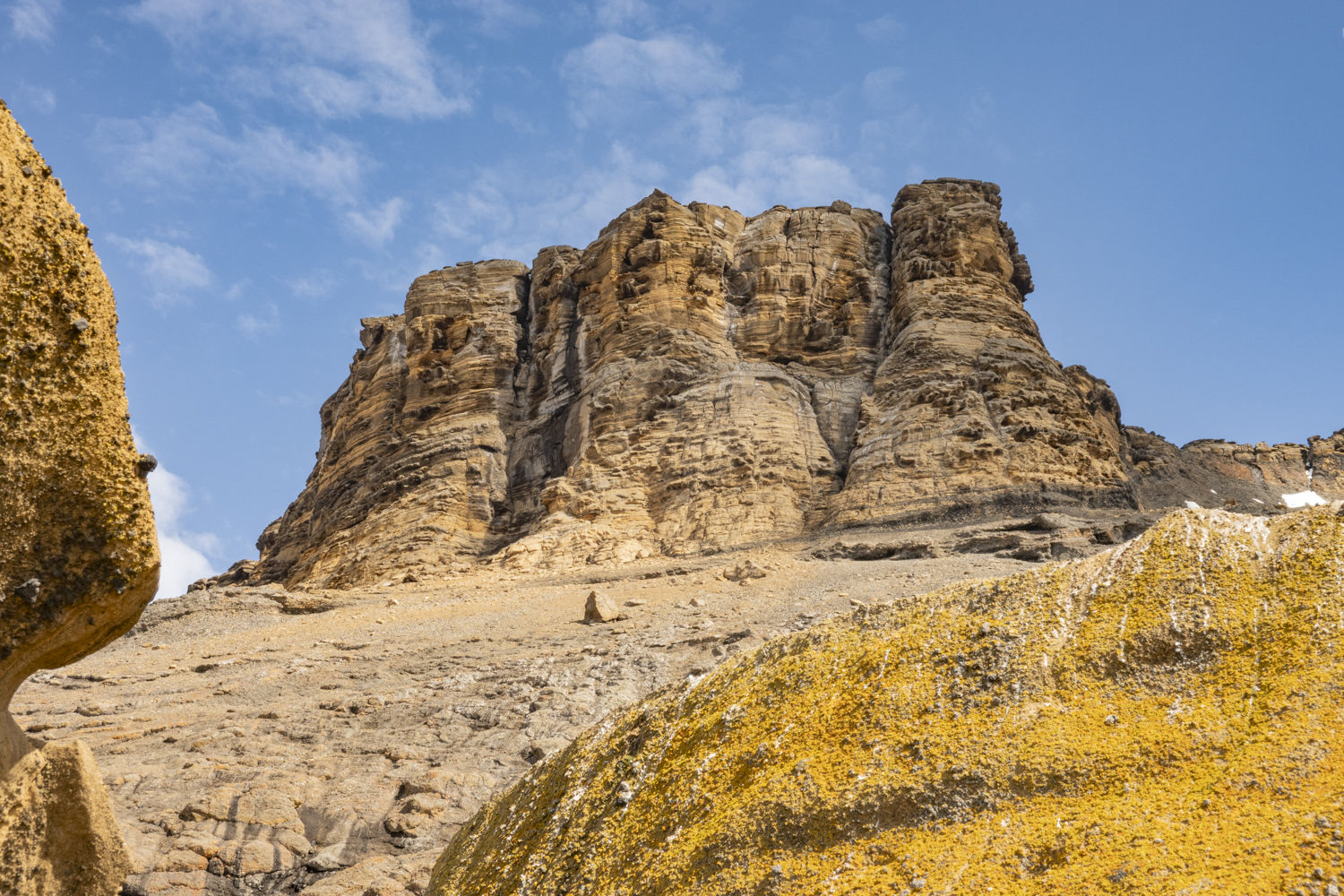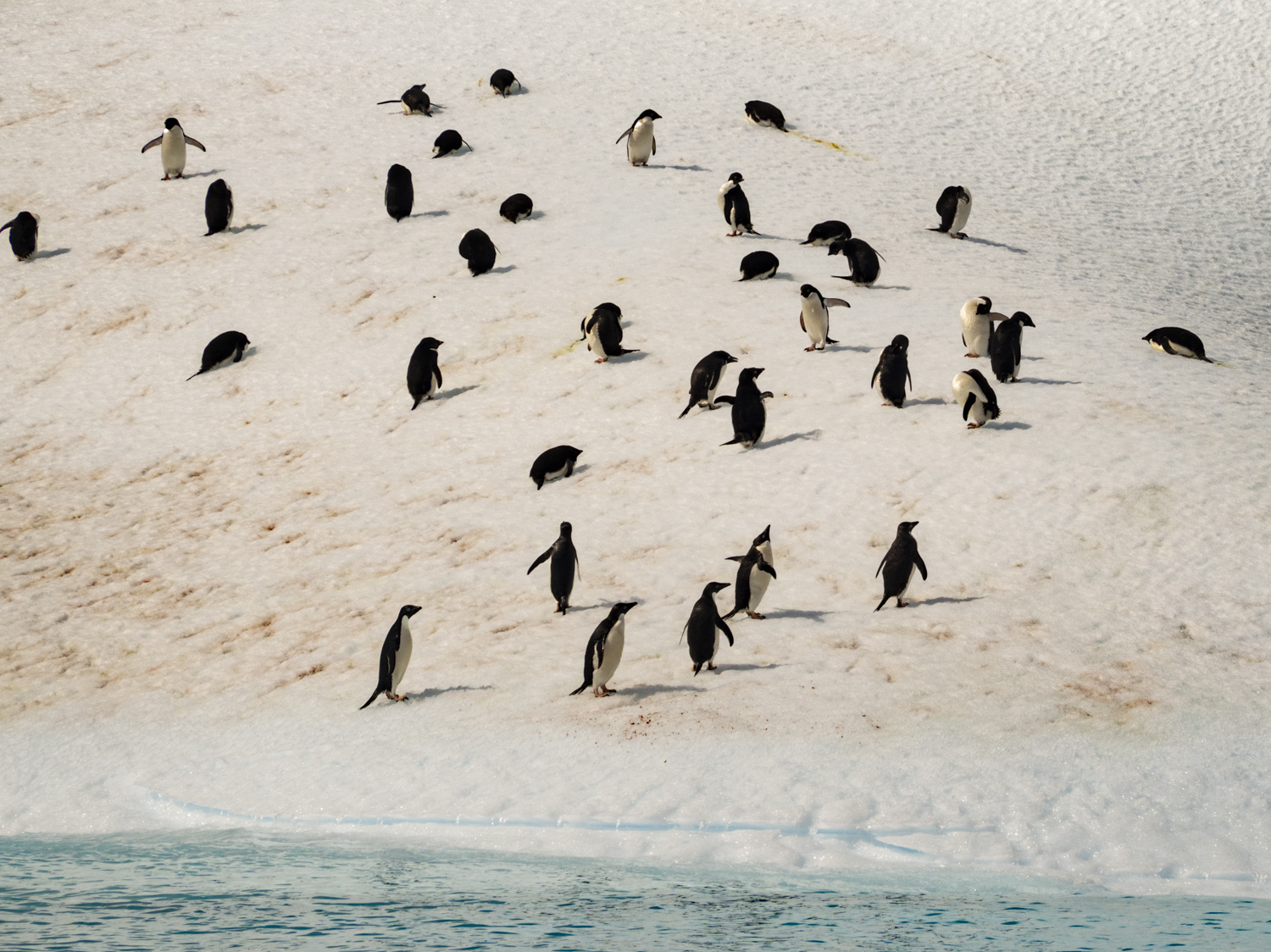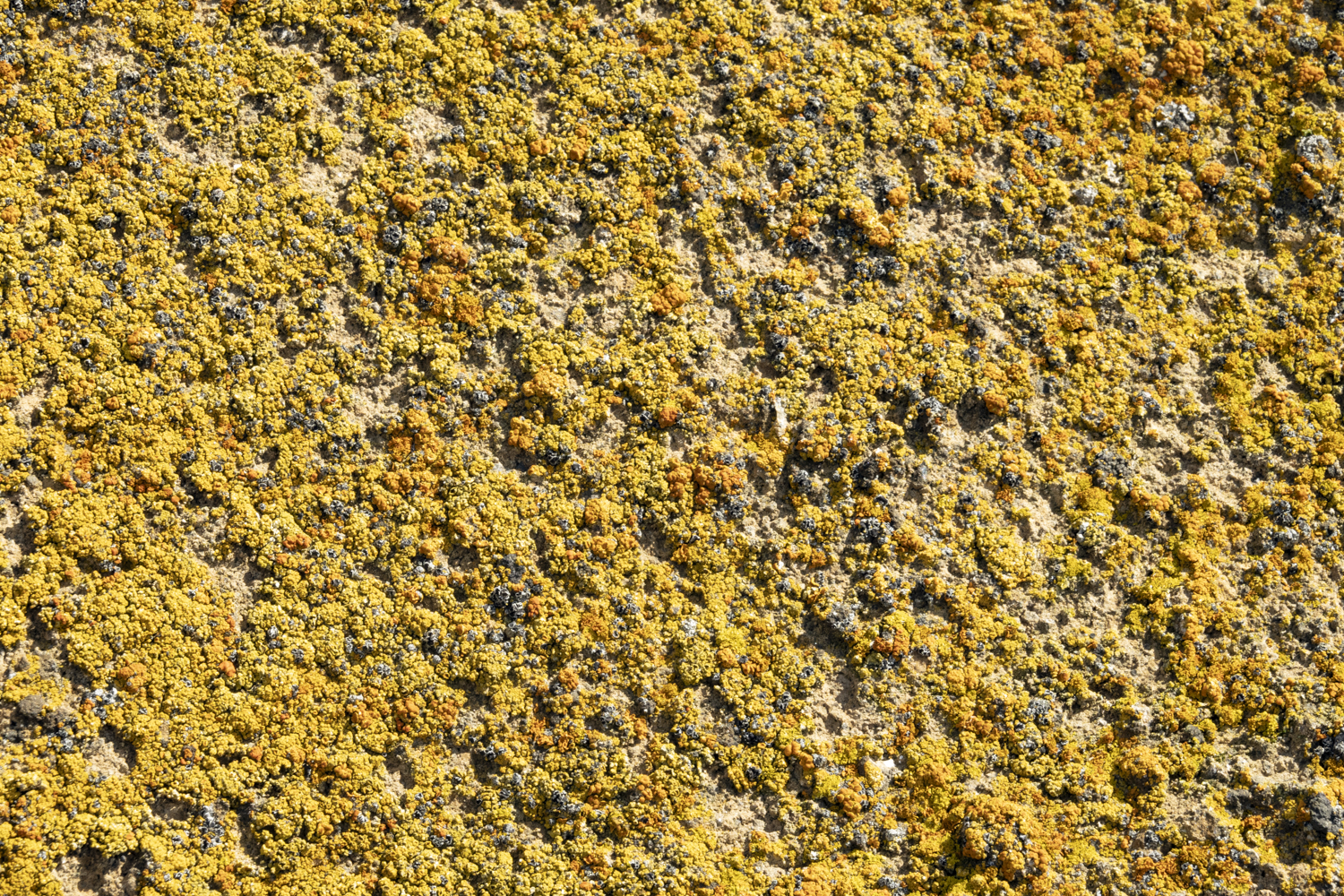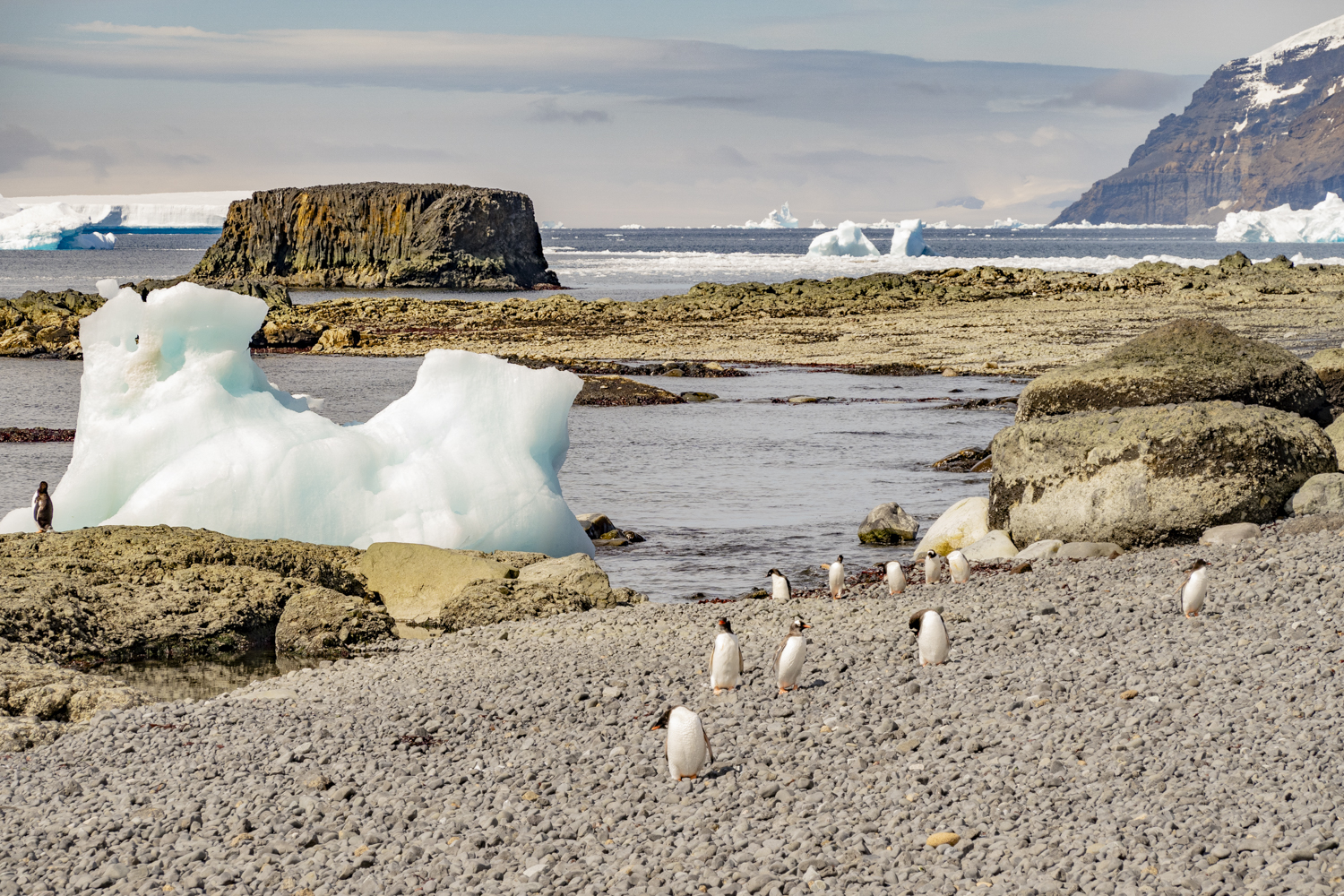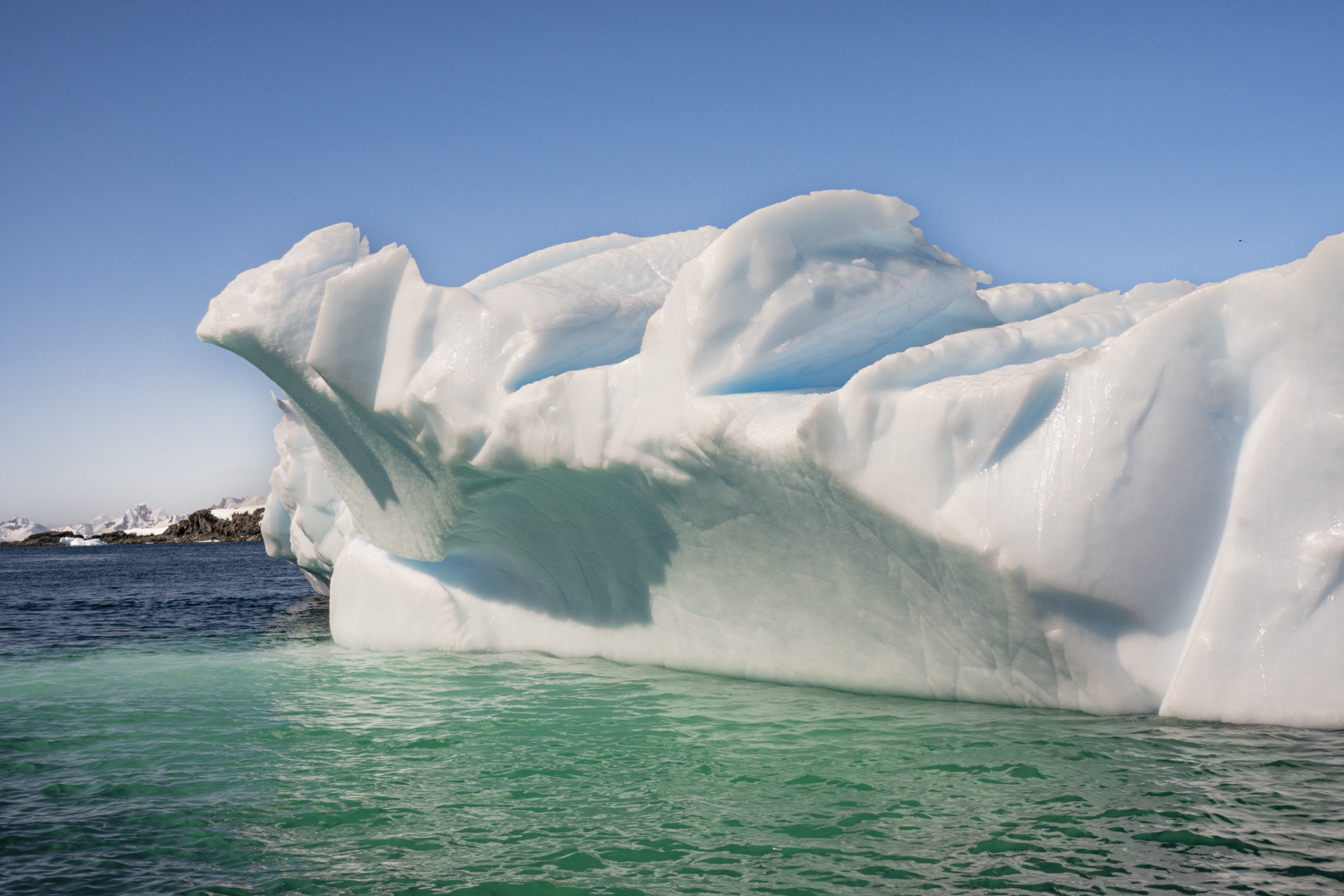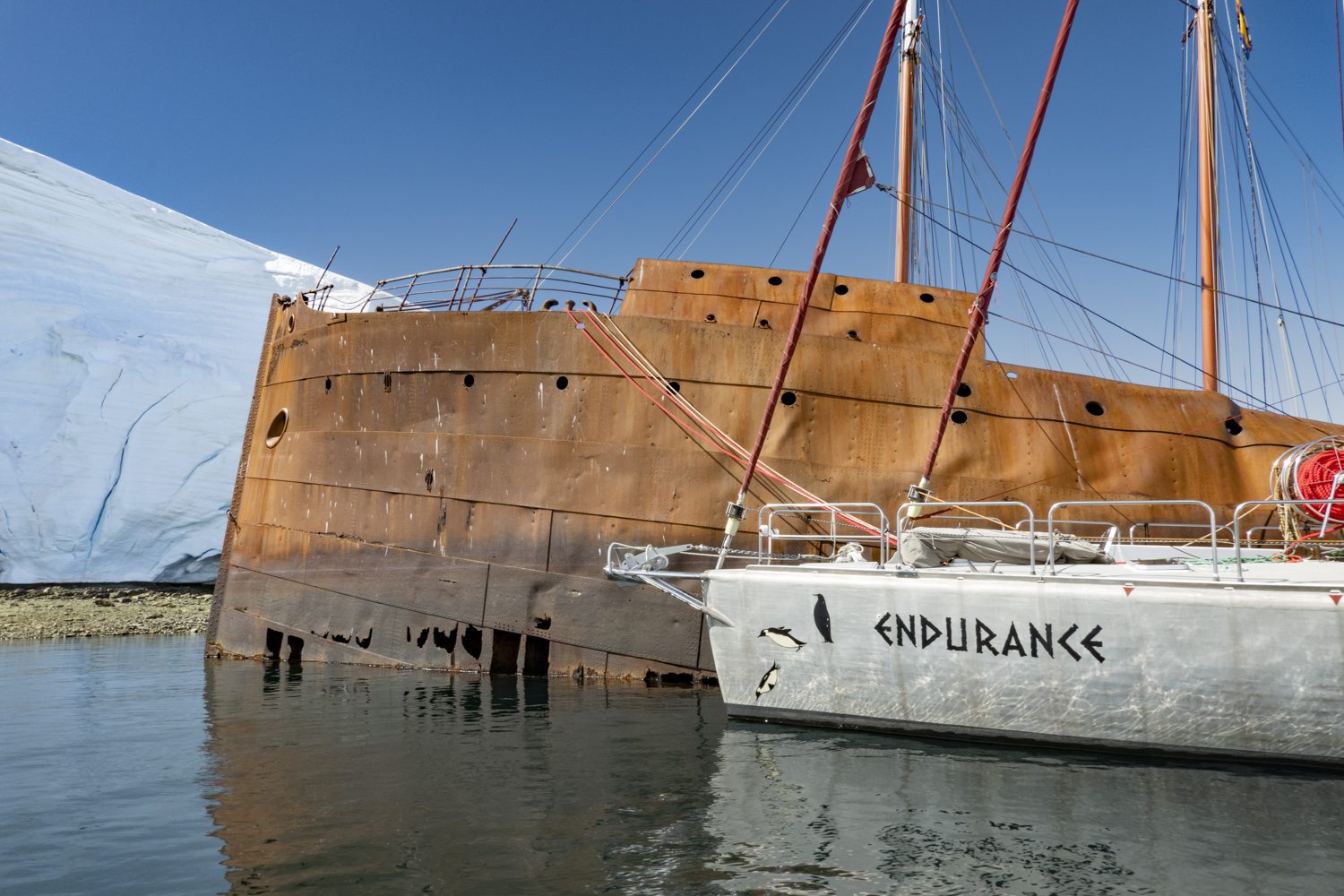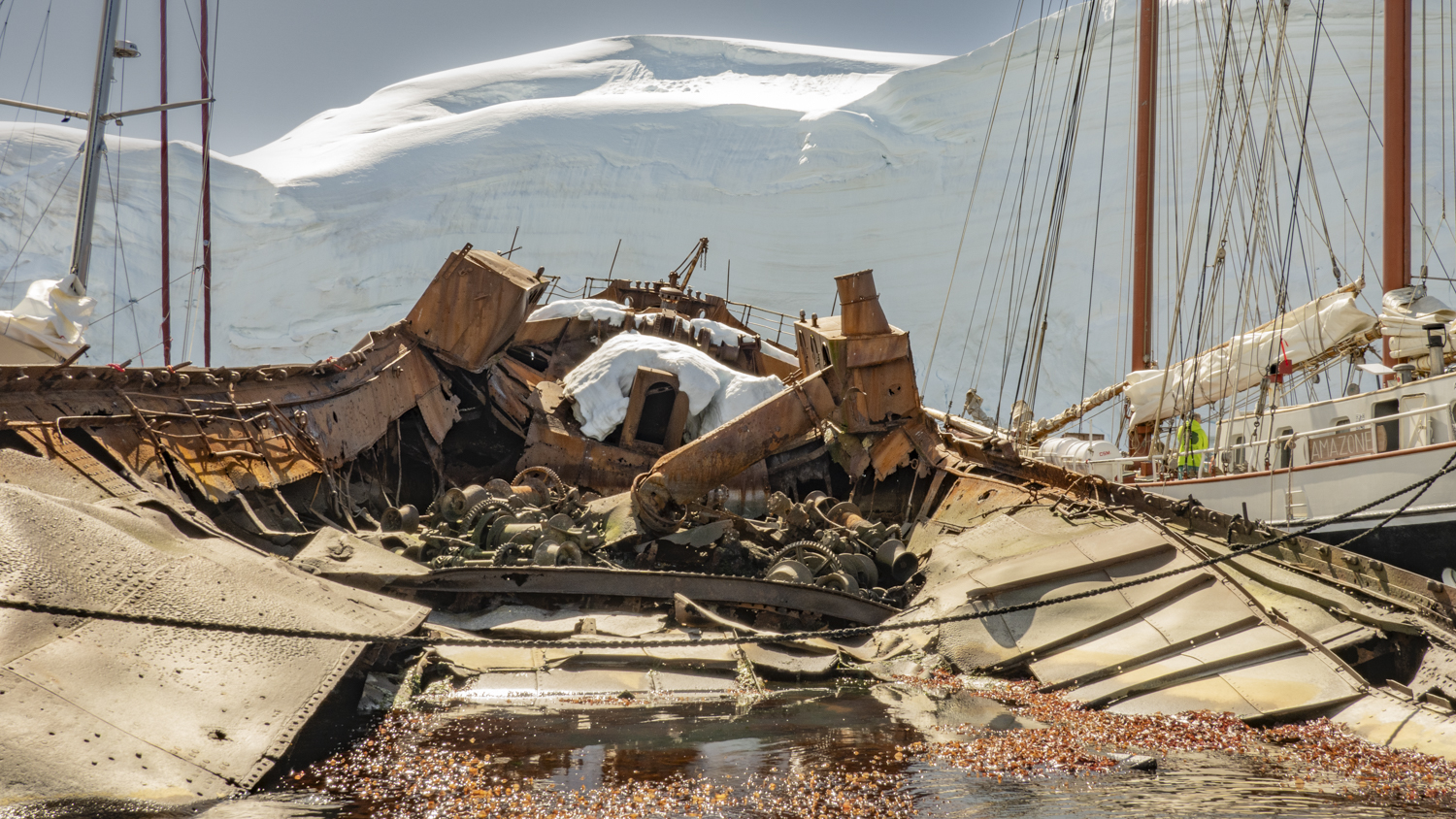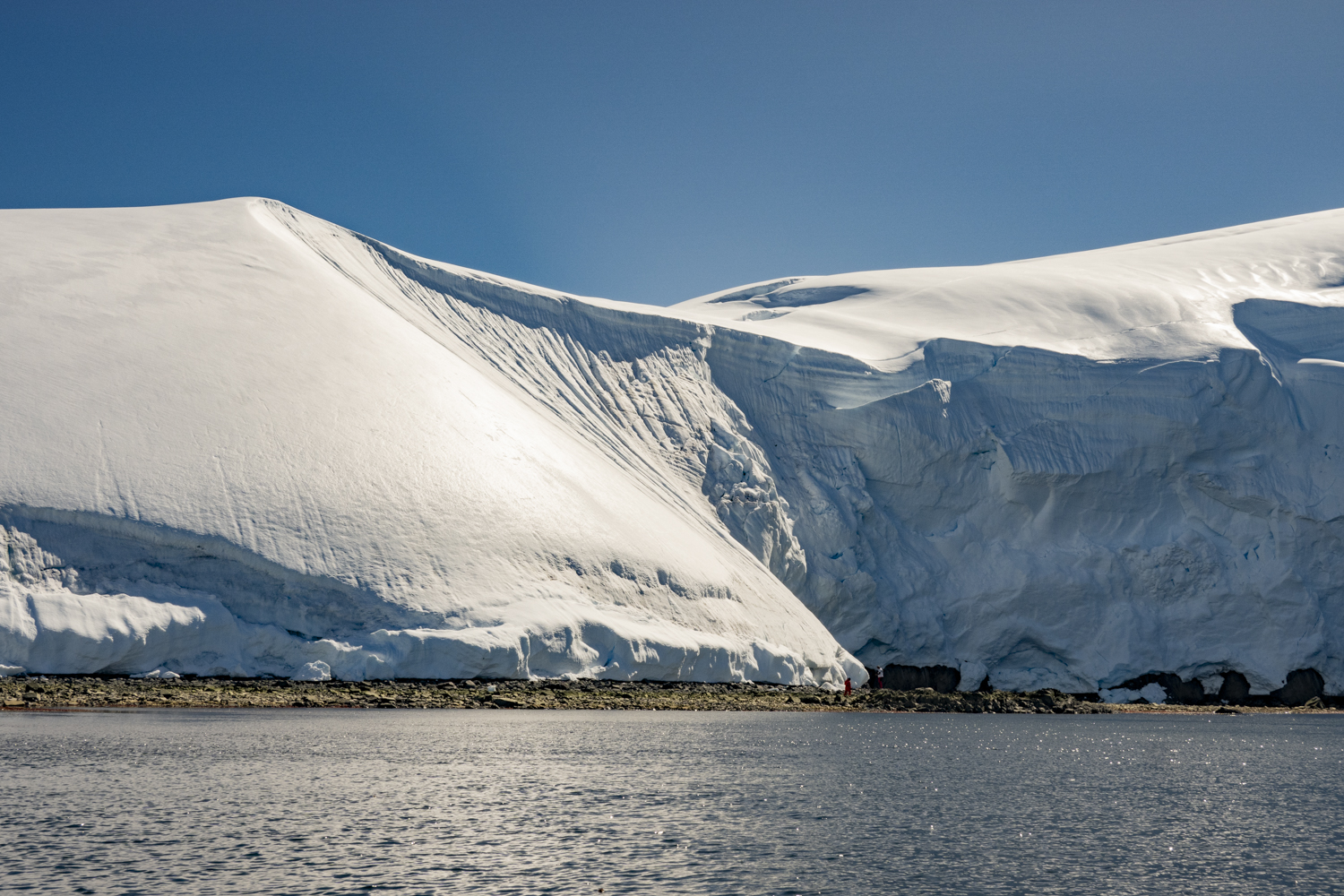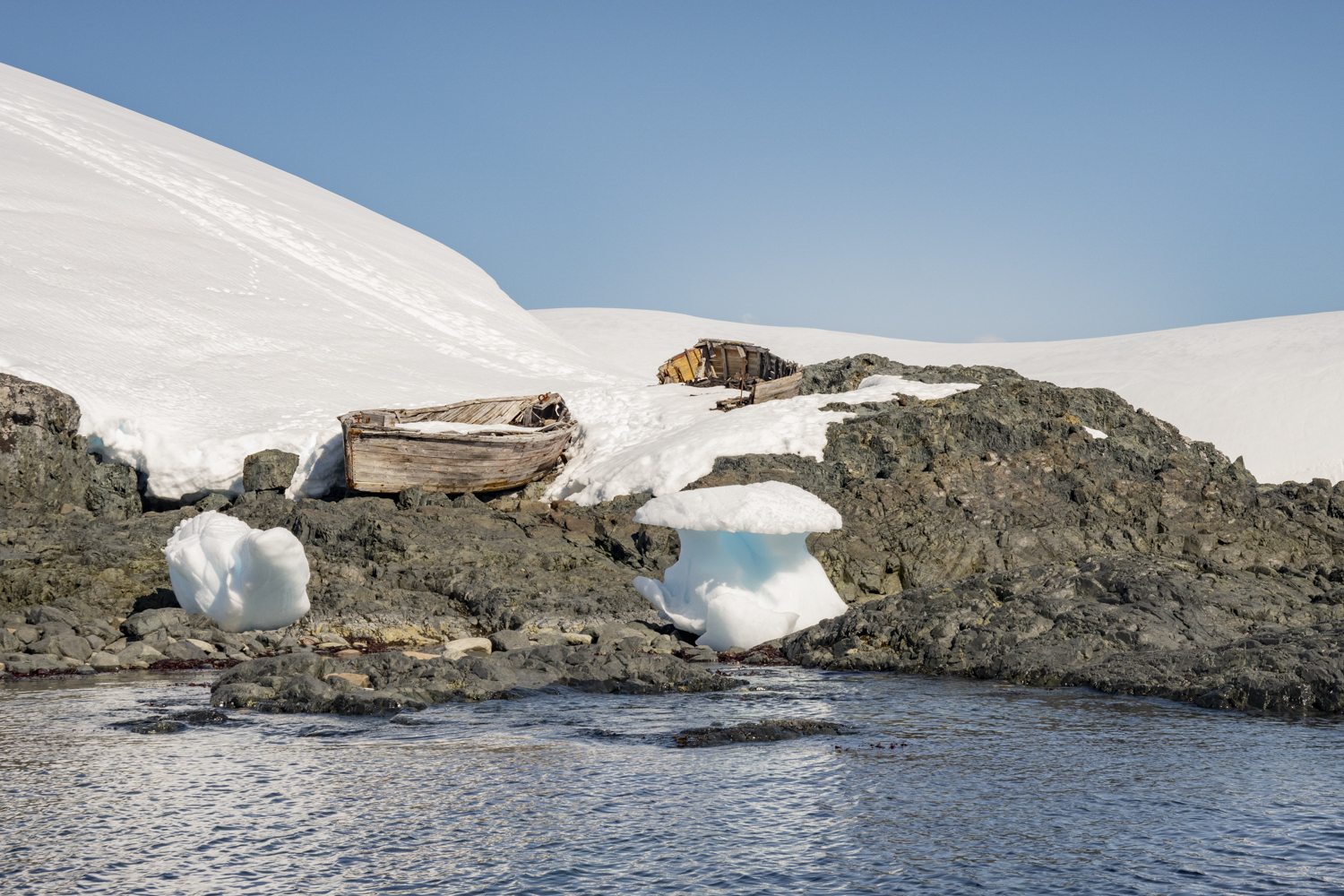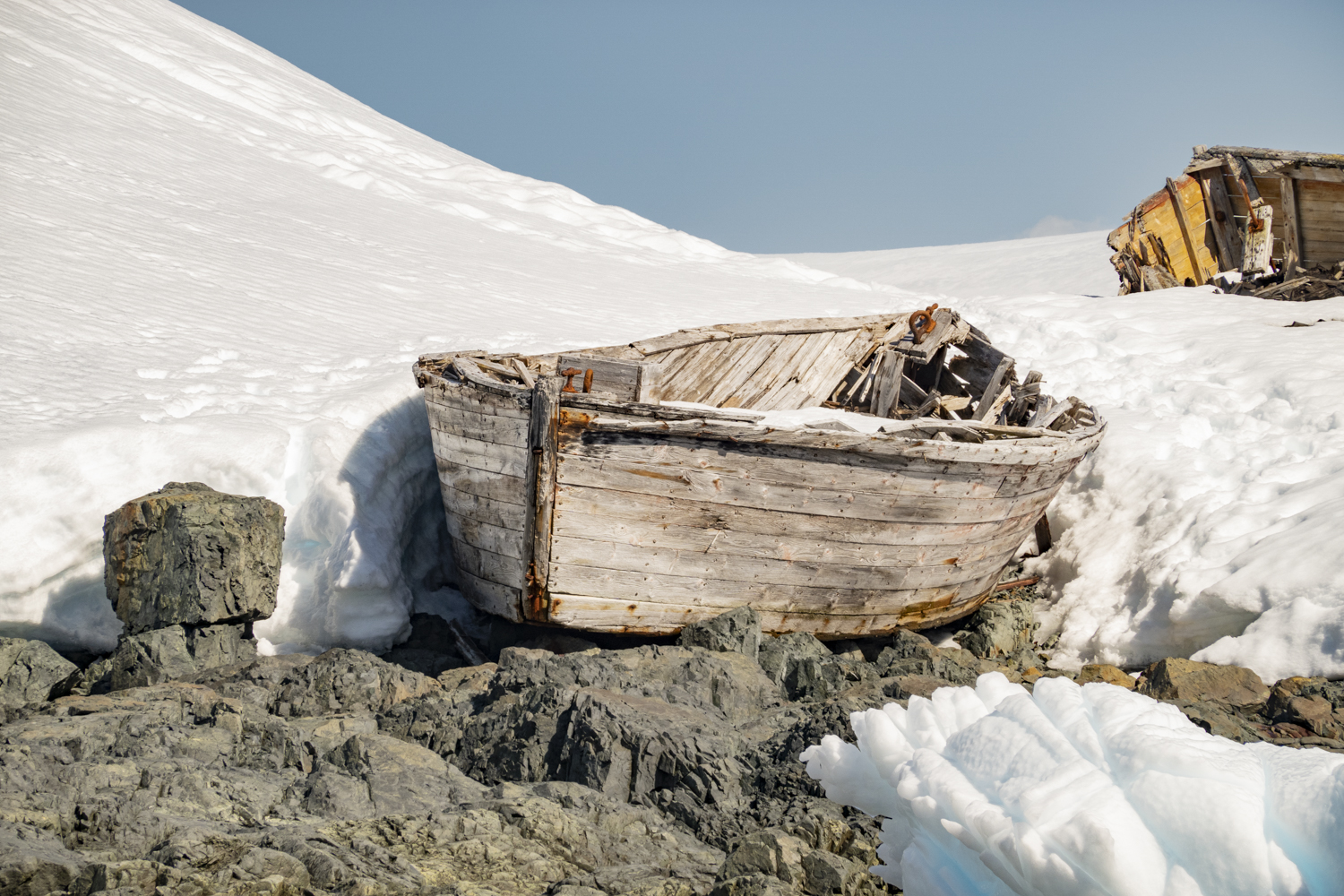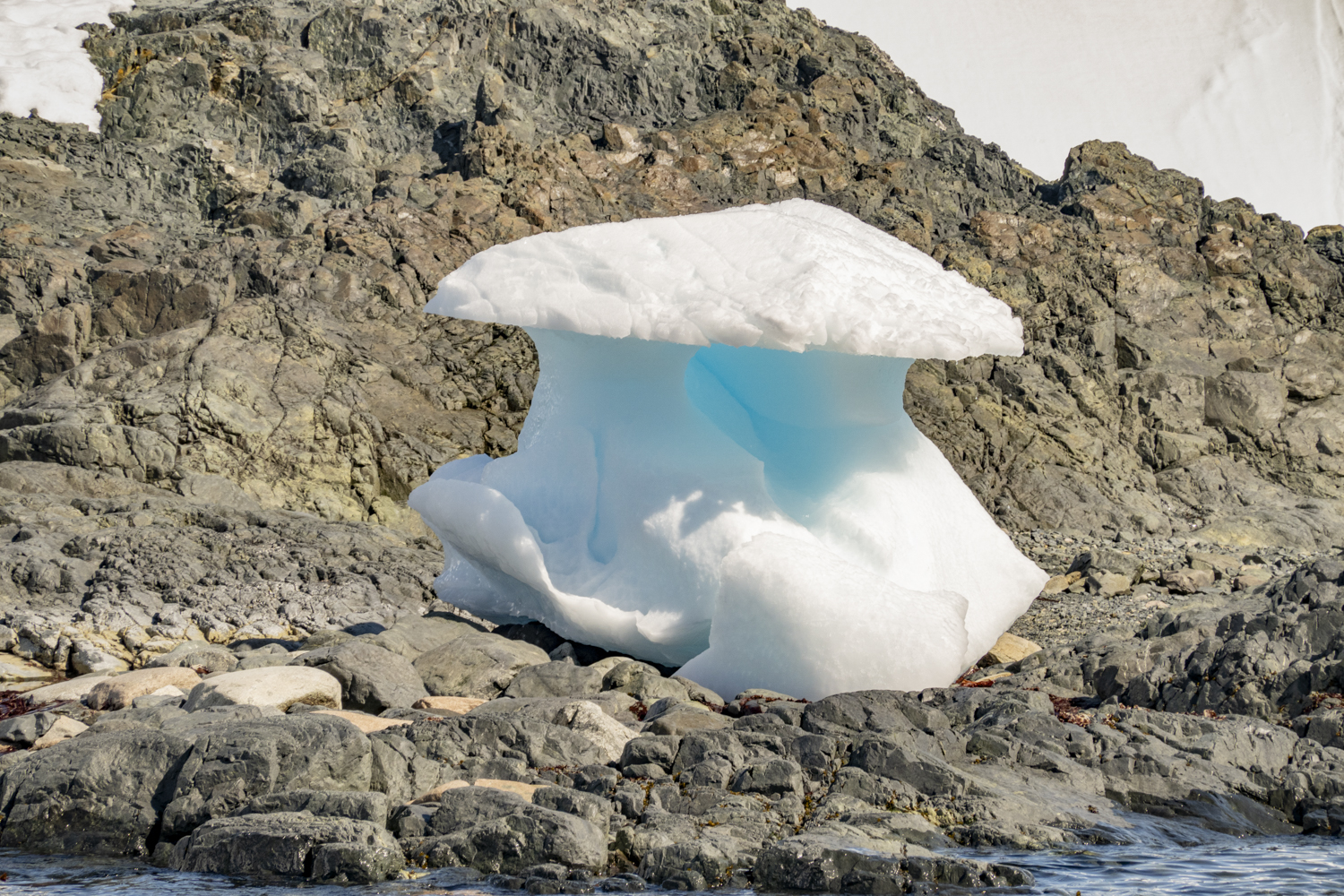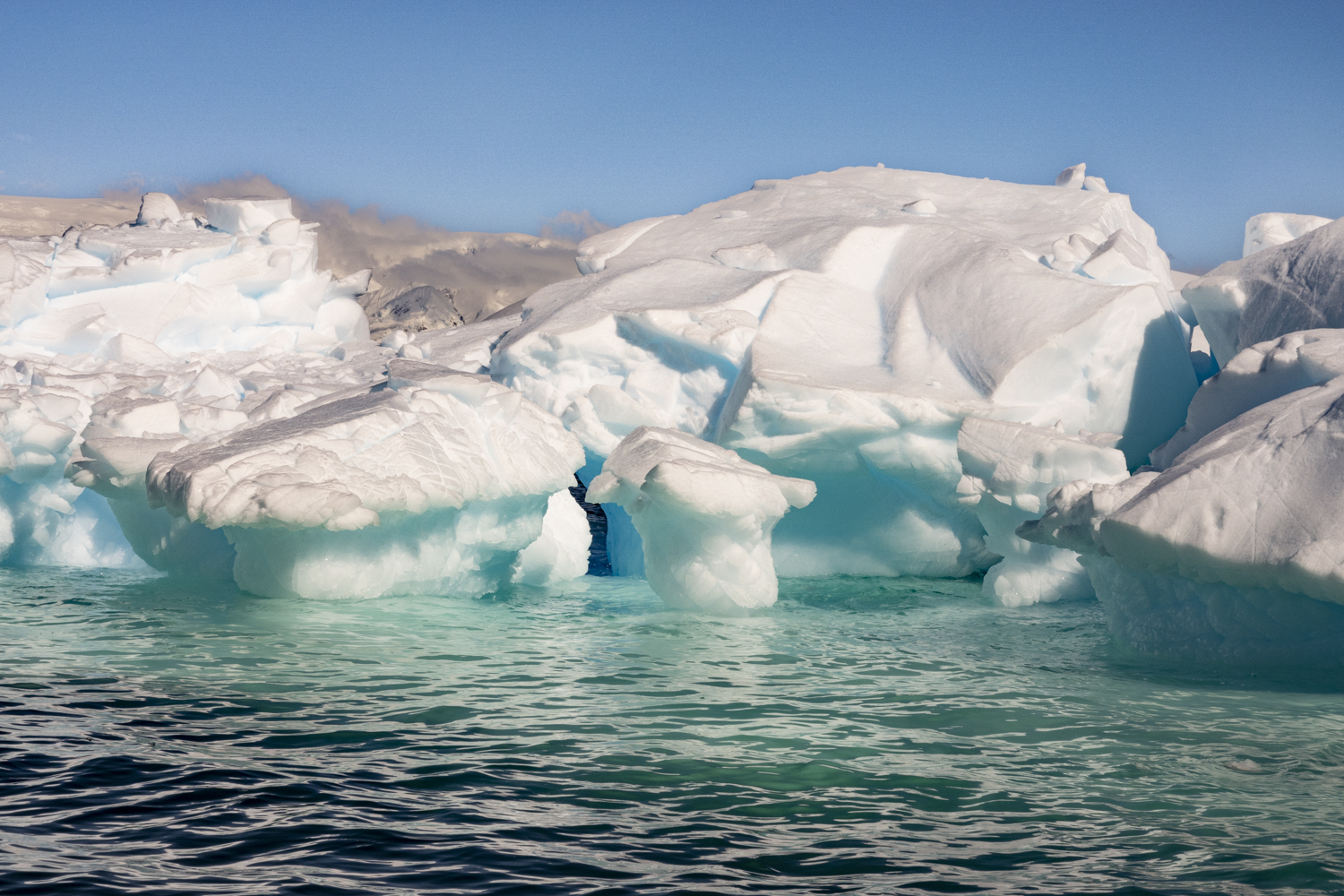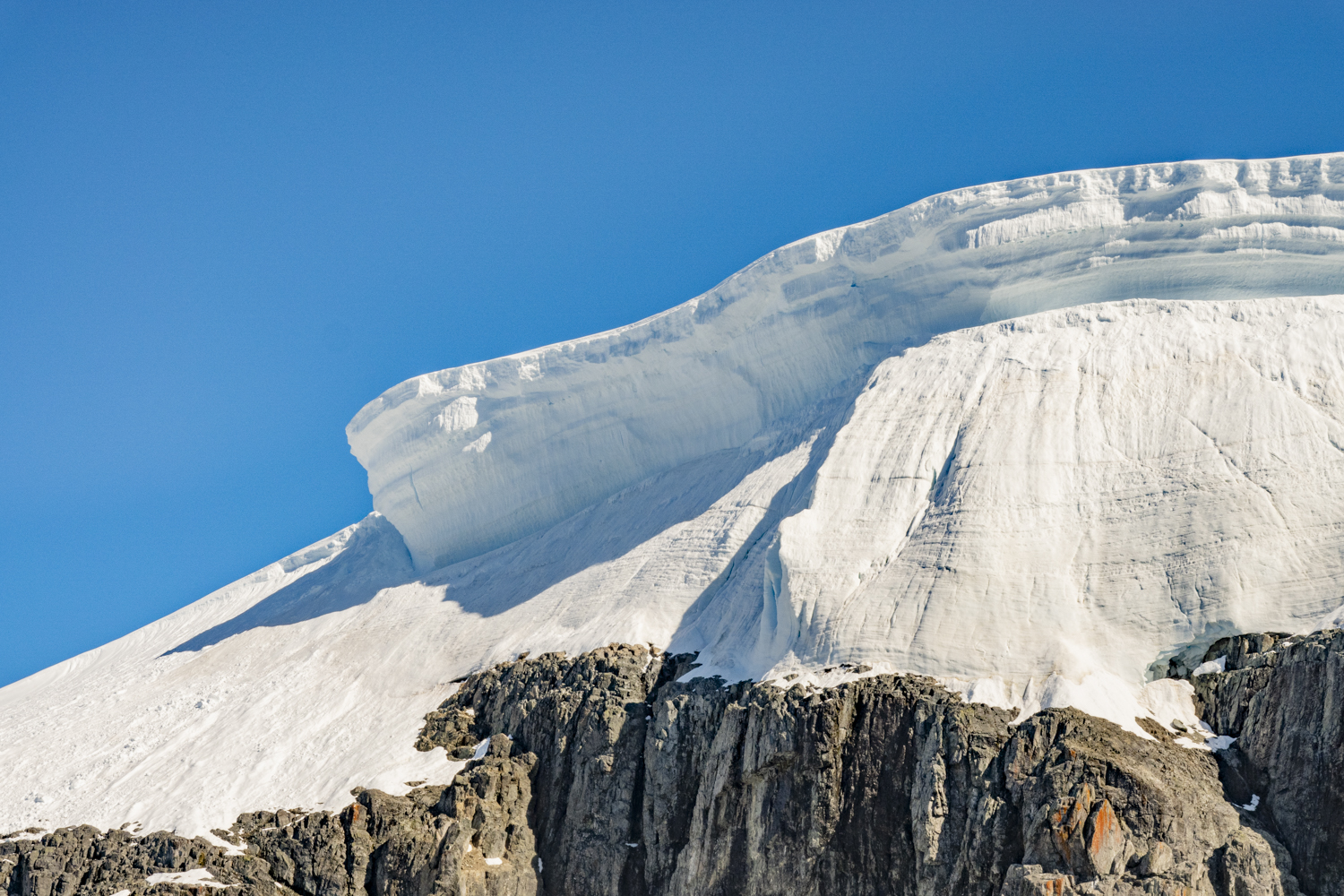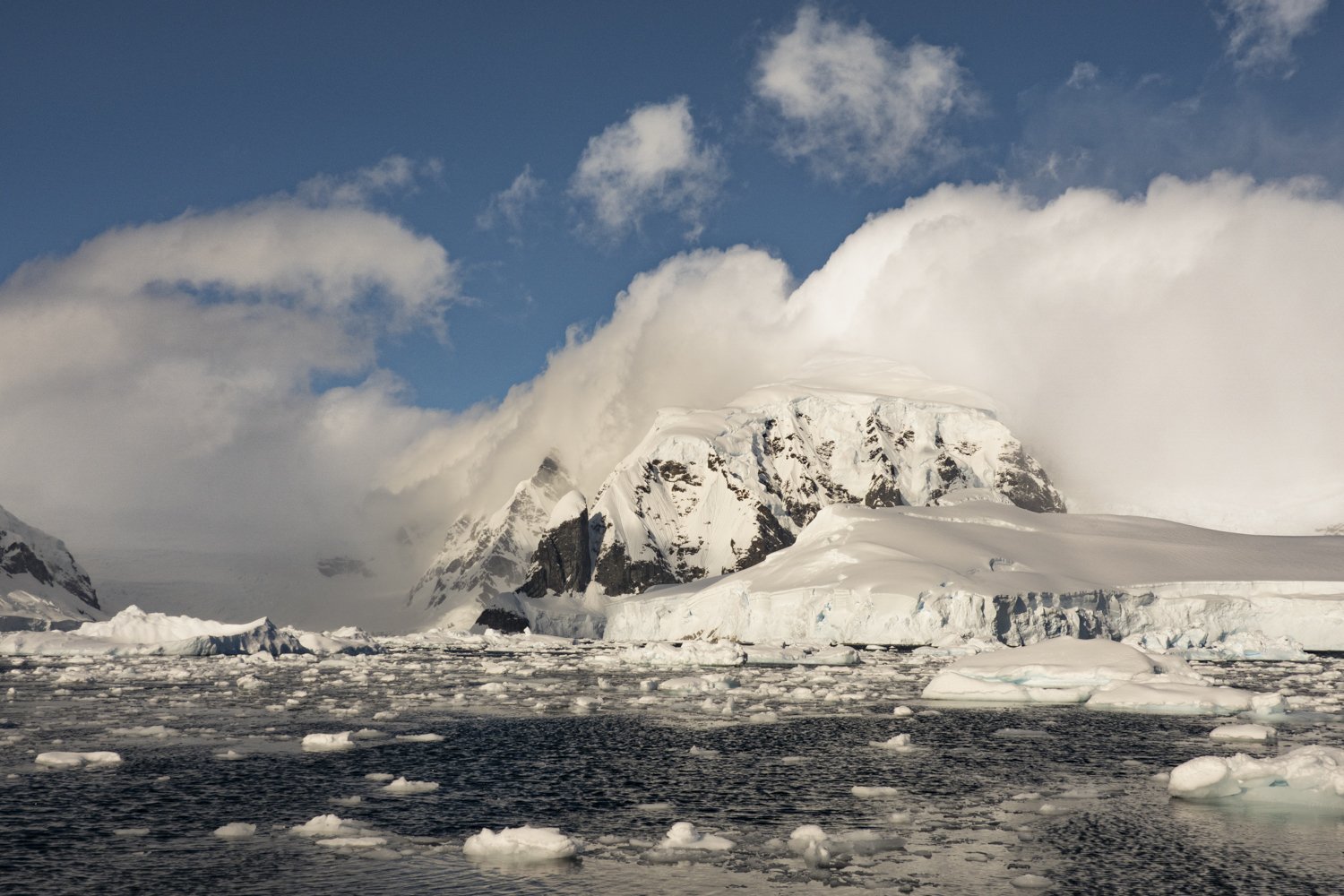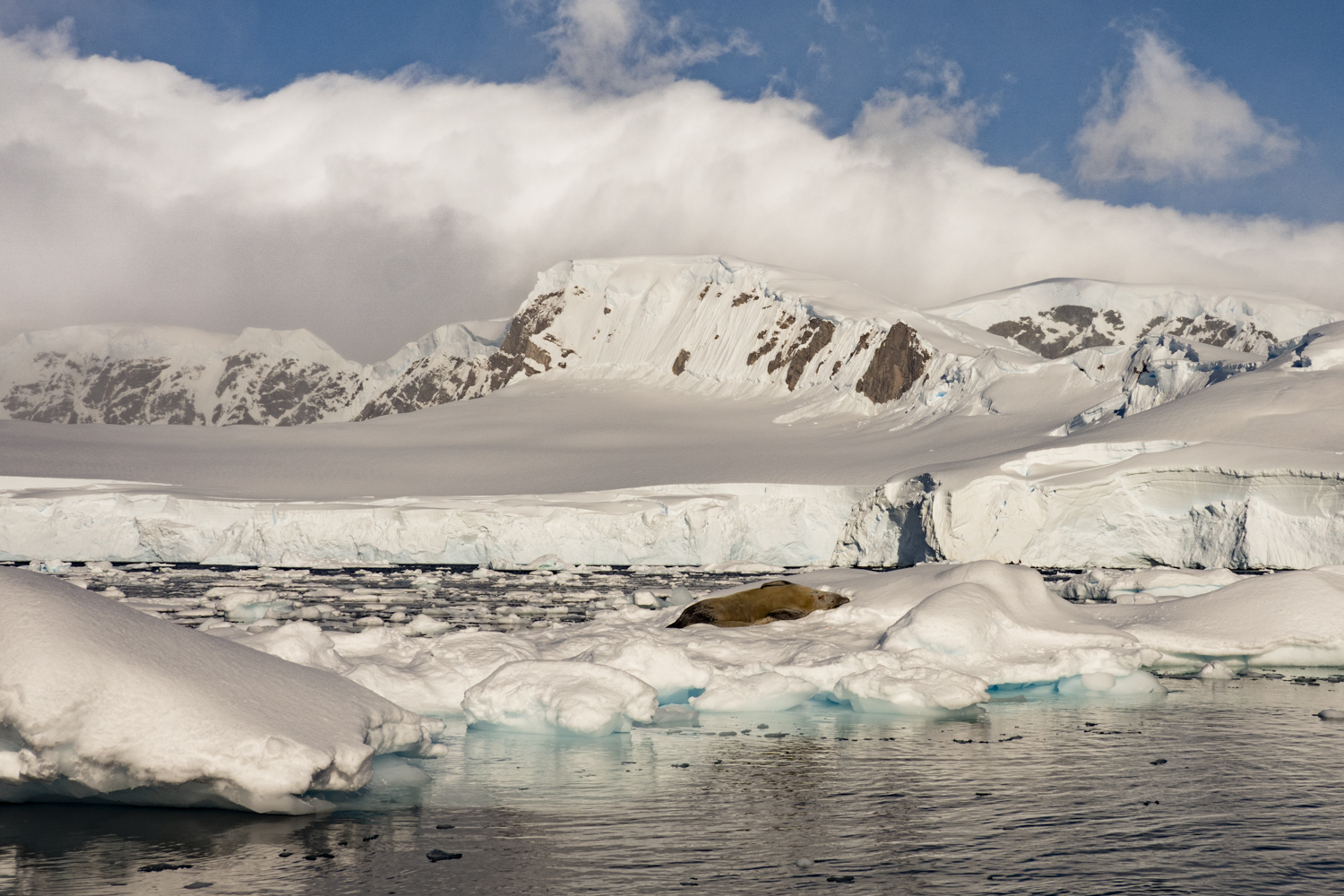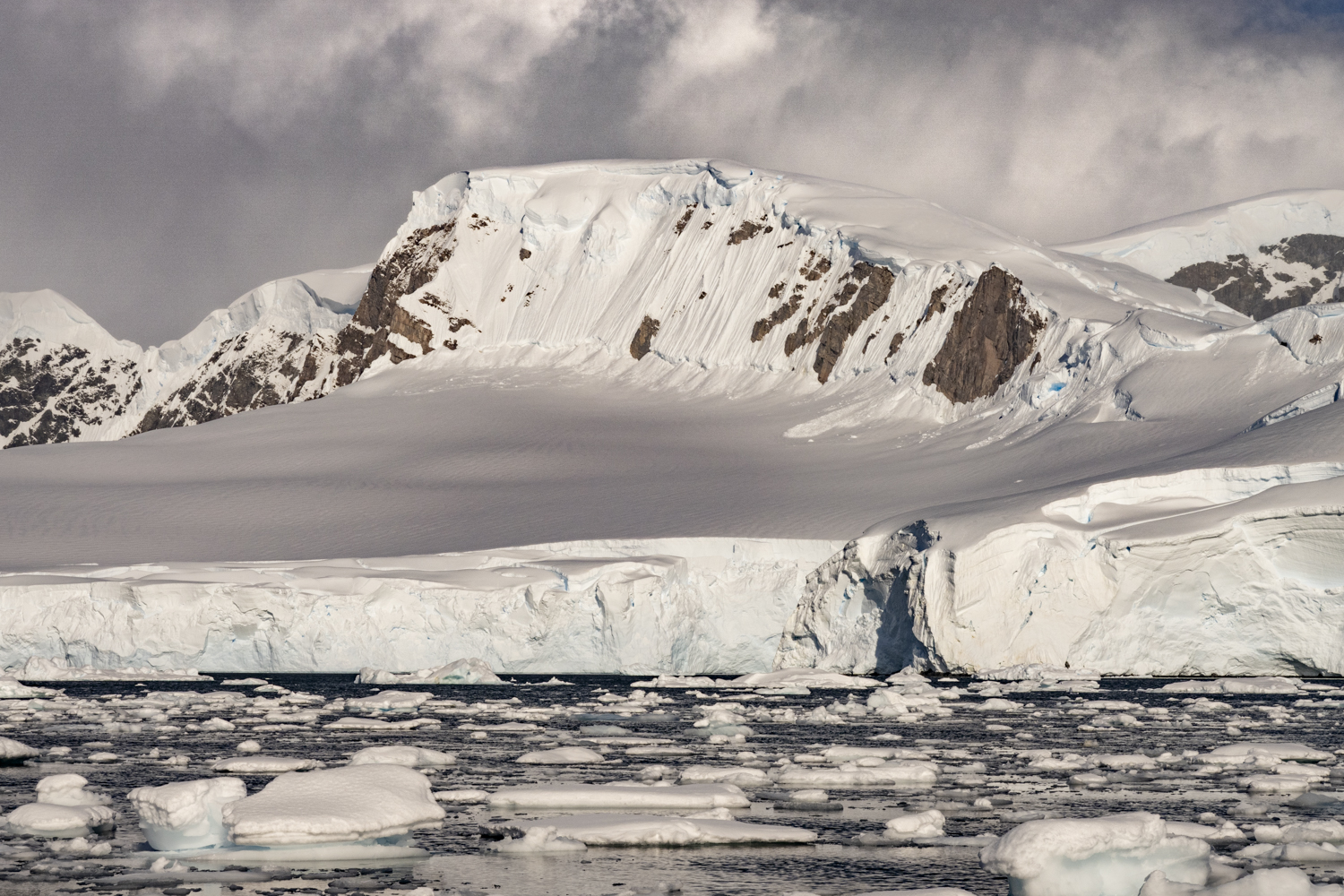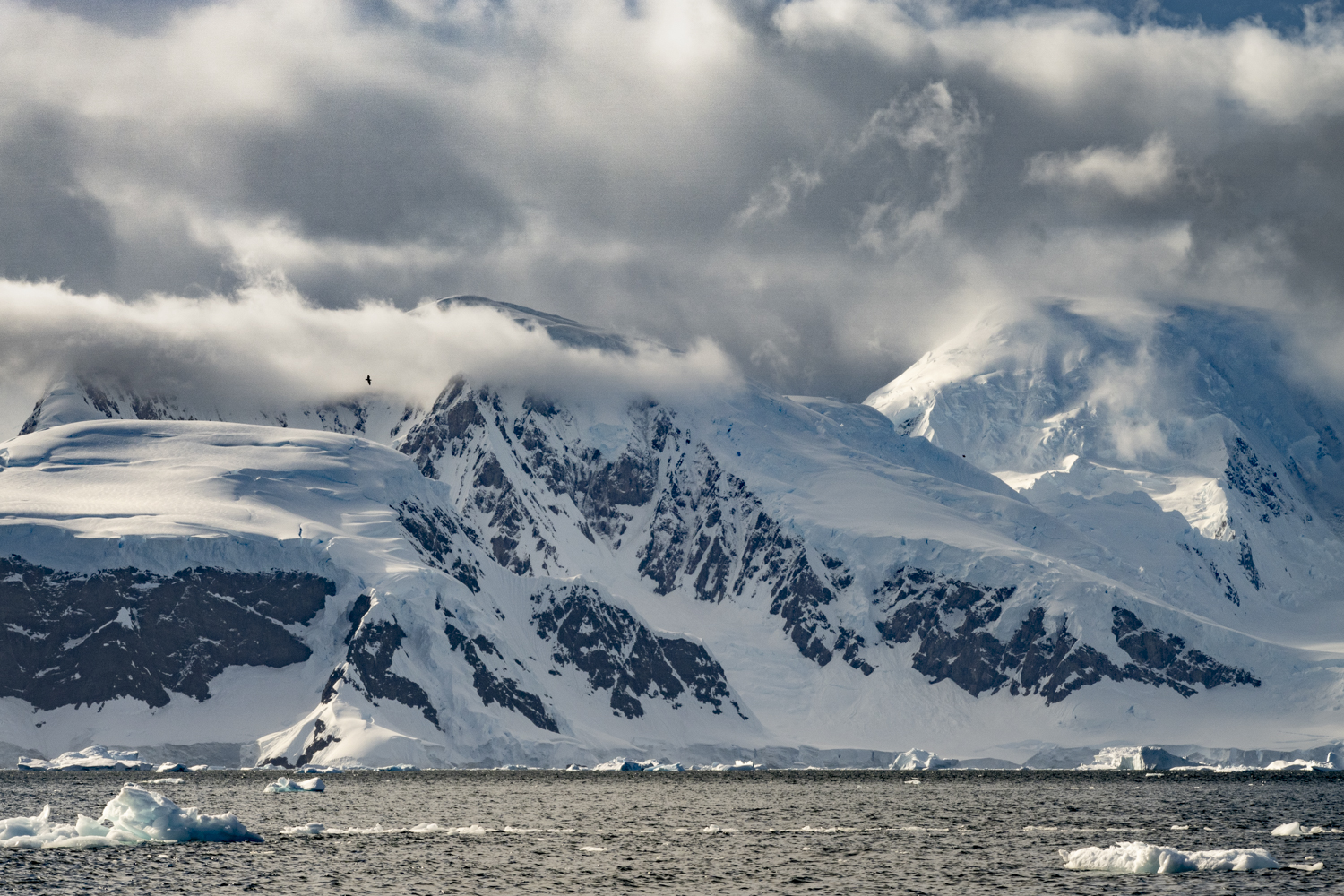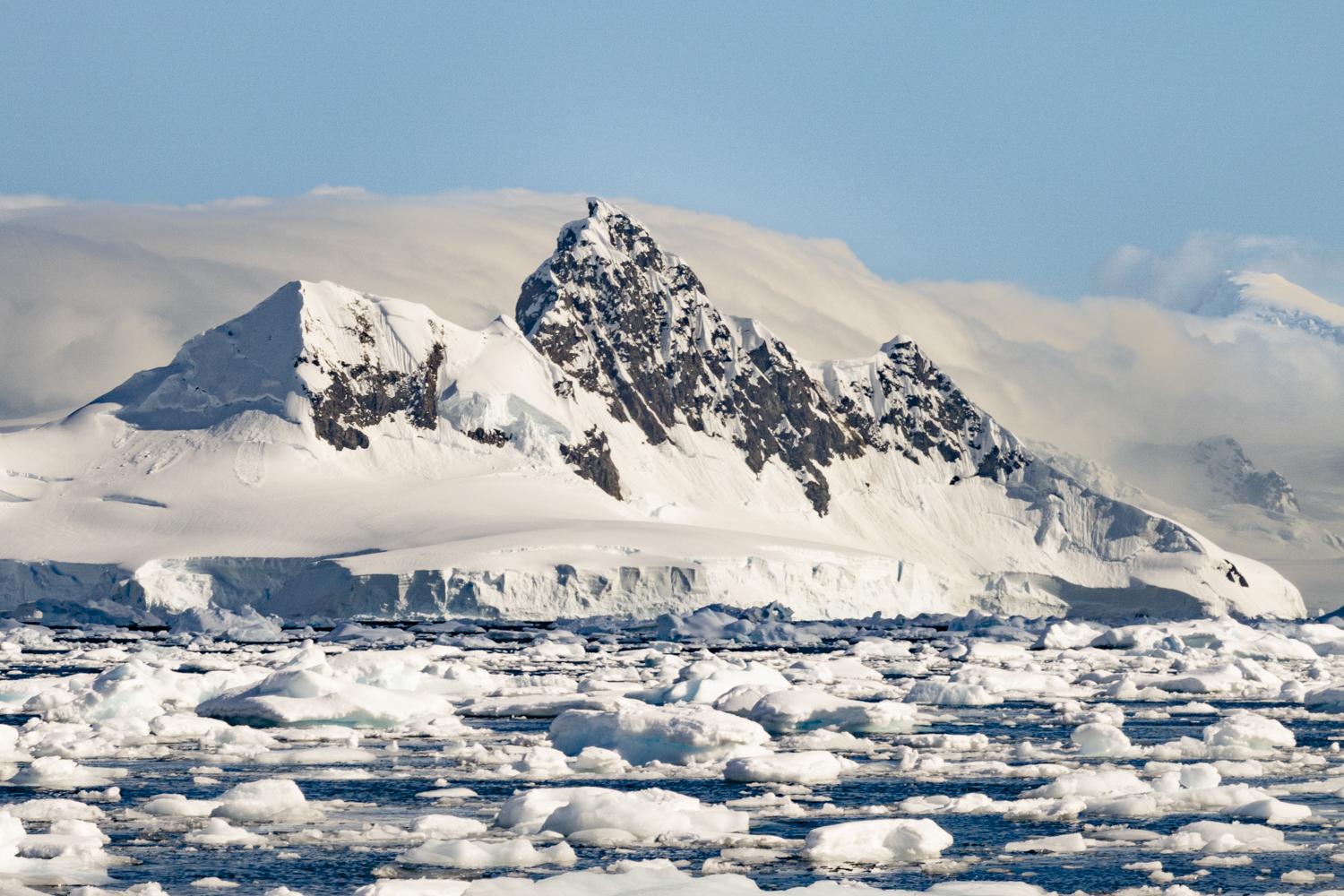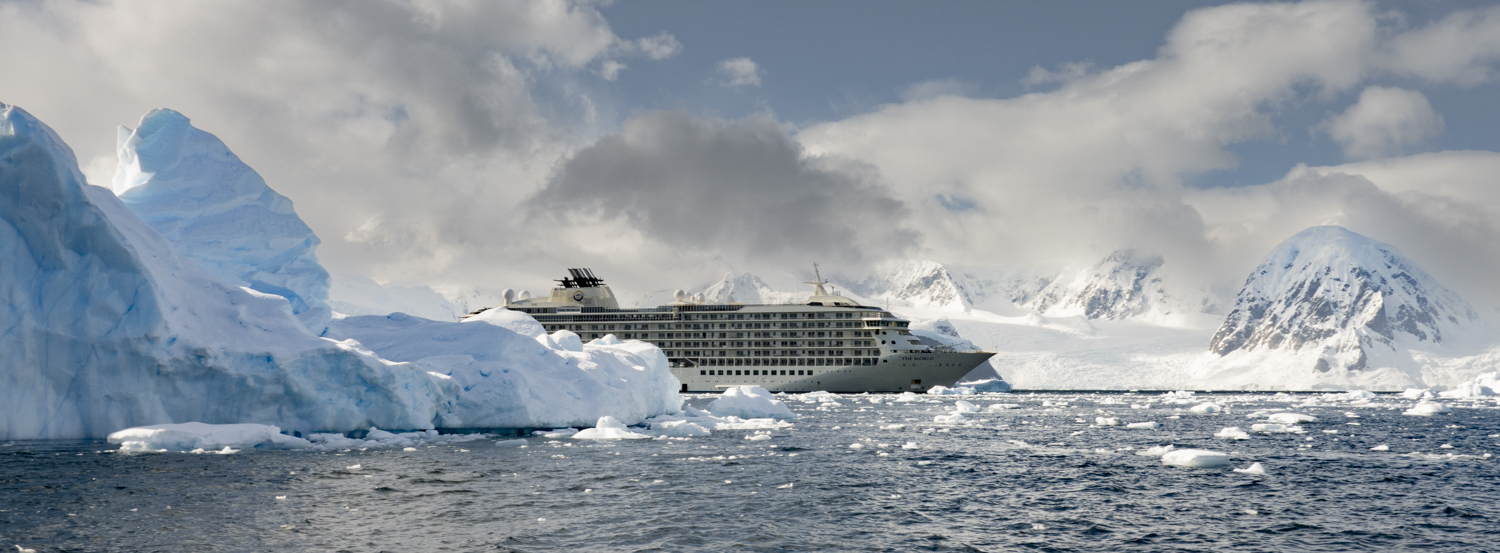
After our exploration of Point Wild on Elephant Island in the South Shetland Islands, Antarctica, as we set sail for the Falkland Islands to the north, we purposely sailed east overnight for a 5:00 a.m. (05:00 hours) rendezvous with the A23a iceberg. Why go out of our way to see one iceberg? Good question!
Covering approximately 1,544 square miles (4,000 square kilometers), which is more than three times the size of New York City, and with a thickness of around 1,312 feet (400 meters), A23a is currently the world’s largest iceberg. It’s hard to picture a piece of ice this big: 40 x 32 nautical miles in a roughly square shape, viewed from above. To put that in perspective, sailing by part of the western edge of A23a for two hours at 8 nautical miles per hour, we only viewed 40% of the length of the iceberg in that time. And how much does it weigh? 1,000,000,000,000 tons! That’s 1 trillion tons. So it is about 100 million times heavier than the Eiffel Tower in Paris.
Calving off West Antarctica’s Filchner-Ronne Ice Shelf in 1986, this iceberg has mostly been stranded since its base became stuck on the floor of the Weddell Sea when its submerged “keel” became lodged on the seafloor. It started to break free of the Weddell Sea in 2020 and then in late November 2023 the iceberg started to move and has since been traveling north at a speed of approximately 30 miles (48 kilometers) a day – not quite 1.5 miles per hour (2.4 kilometers per hour). The iceberg is drifting in the Antarctic Circumpolar Current, the great sweep of water that circles the continent in a clockwise direction.
So, we caught sight of it for two hours in the Southern Ocean in the early morning light, in the midst of a heavy snowfall. It’s hard to find words to describe such a colossal iceberg. We were able to sail very close to the western edge of the iceberg for two hours, giving us early risers the opportunity (in a blowing snowstorm) to marvel at the numerous ice arches and caves along the edge of the iceberg as it rapidly decays as it moves north through the Southern Ocean. Only later that afternoon when we saw some drone video images could the immensity of the iceberg begin to become more visualized. Our expedition videographer kindly shared a still photographic image from the drone that I have included below [see photograph # 12]. Our videographer noted: “It’s mind-bogglingly big. I actually don’t think we can fathom just how big it is; we can only know how big it is from science. It’s certainly too big to photograph. It stretches as far as you can see in both directions.”
As A23a has moved north of Antarctica through warmer ocean waters and warmer air temperatures over the past two months, it has been gradually eroding. You will see in our photographs that the edge of the iceberg shows many deep surface cracks, hollowed out caves and carved columns and other “structures” that will eventually fall off. We saw large chunks of the iceberg break off into the ocean as we sailed close by the western edge.



So where will A23a go and what is its fate?“…the Antarctic Circumpolar Current… together with the prevailing westerlies, is pushing A23a in the general direction of the South Orkney Islands, which are about 600km (370 miles) northeast of the tip of the Antarctic Peninsula. It is firmly in the track of what scientists refer to as “iceberg alley” — the major route for the export of ice from the continent. The interplay of winds, ocean fronts and eddies will determine its precise course over the coming weeks, but many of these giant flat-topped, or tabular, bergs end up passing by the British Overseas Territory of South Georgia. Their destiny is to fragment and wither to nothing. Their legacy is the ocean life they seed by dropping entrained mineral nutrients. From plankton up to great whales – all benefit from the melting bergs’ fertilisation effect.” — www.bbc.com/news/science-environment-67986443




“A23a has held the “largest current iceberg” title several times since the 1980s, occasionally being surpassed by larger but shorter-lived icebergs, including A68 in 2017 and A76 in 2021. The enormous iceberg will eventually disappear completely.
“Scientists have said that, while this particular iceberg likely broke away as part of the natural growth cycle of the ice shelf, climate change is driving worrying changes in this vast, isolated continent with potentially devastating consequences for global sea level rise. Last February, Antarctic sea ice reached its lowest extent since records began, at 691,000 square miles.” — www.cnn.com/2024/01/17/climate/iceberg-a23a-erosion-photos-scli-intl-scn-climate/index.html








“How rare are giant icebergs like this one? Chad Greene at NASA’s Jet Propulsion Laboratory in California says a large iceberg like A23a calves off of one of Antarctica’s ice shelves about once a decade; the Filchner-Ronne ice shelf sees such an event about once every 50 years. ‘Icebergs are like earthquakes – we get lots of tiny ones, and a few really big ones like A23.’” — www.newscientist.com/article/2405085-where-is-the-iceberg-that-broke-off-antarctica-and-is-it-a-threat/
Legal Notices: All photographs copyright © 2024 by Richard C. Edwards. All Rights Reserved Worldwide. Permission to link to this blog post is granted for educational and non-commercial purposes only.












